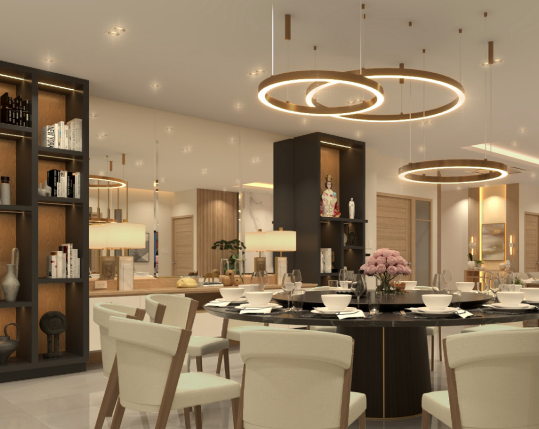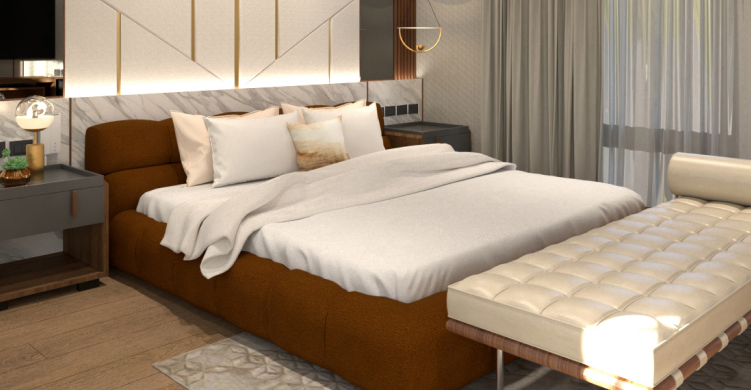The Psychology of Color: How Interior Design Affects Mood
The psychology of color in interior design plays a significant role in shaping our emotions and overall mood. This blog explores how different colors, when used in homes or office spaces, can evoke a wide range of feelings—from calming blues that promote relaxation to energizing reds that stimulate activity.
The subtle or bold use of hues can greatly impact the aesthetics of a space and the mental and emotional well-being of those within it. Understanding how color influences our psychology allows us to create spaces that align with desired moods and experiences.
What Is Color Psychology?
Color psychology is the study of how colors influence human emotions, behaviors, and perceptions. It explores the impact of different hues on our moods, thoughts, and even physical sensations. Certain colors are often associated with specific feelings or reactions—such as blue evoking calmness or trust, red stimulating excitement or urgency, and yellow promoting happiness or energy. Businesses, designers, and marketers often use color psychology to create environments or branding that evoke desired emotional responses in people.
Related: Choosing the Right Colors for Your Bachelor Pad
Choosing the Right Interior Design Color
Choosing the right interior design colors is essential to creating the desired atmosphere in any space. Different color families can evoke various emotions, making understanding the effects of warm, cool, and neutral tones crucial.
Warm Colors
Warm colors are known to evoke feelings of energy, enthusiasm, and warmth in a space.
- Red: A bold and energetic color that adds passion and intensity to any room
- Orange: Encourages warmth, creativity, and conversation, making it ideal for social spaces
- Yellow: Associated with happiness and optimism, this color brightens up areas like kitchens or dining rooms
- Pink: Adds a soft, soothing touch, often used in bedrooms or spaces meant for relaxation
Cool Colors
Cool colors bring a sense of calm, relaxation, and tranquility to a space.
- Blue: Promotes calmness and relaxation, making it perfect for bedrooms or bathrooms
- Green: A refreshing color that brings a sense of nature and balance to a room
- Purple: Often linked with luxury and creativity, this color can add a sense of sophistication
Neutral Colors
Neutral colors serve as a versatile foundation in interior design, offering balance and subtlety to enhance other elements in a space.
- Brown: Brings warmth and stability to a space, often used in condo living room areas
- Black: Adds drama and depth, often used in accents or modern designs
- White: Best for minimalist spaces, it creates a clean and airy feel
Related: How to Choose the Perfect Color Scheme for Your Home
How Color Affects Mental Health
Color significantly affects mental health, with different shades influencing emotions and overall well-being in various ways.
Warm Colors
Warm colors such as red, orange, and yellow tend to evoke feelings of energy and excitement. While these hues can be motivating and uplifting, they may also increase feelings of anxiety or stress in certain environments when used excessively. Red, for instance, can raise energy levels, but too much can feel overwhelming.
Cool Colors
Cool colors like blue, green, and purple are often associated with calmness, relaxation, and mental clarity. These shades are generally soothing and help to reduce stress and anxiety, making them ideal for spaces where relaxation and focus are needed. Blue, in particular, is known to lower blood pressure and heart rate, promoting tranquility.
Neutral Colors
Neutral colors such as white, black, brown, and gray offer balance and versatility in design. These tones create a peaceful and stable environment, which can help reduce overstimulation and create a grounding effect. However, overuse of neutral shades, especially gray, might lead to feelings of sadness or monotony if not paired with more vibrant accents.
Related: Benefits of a Good Office Interior Design for Mental Health and Productivity
Bottom Line
In conclusion, the colors you choose for your interior design can significantly impact your mood and mental health. Warm colors energize and inspire, cool colors calm and focus, while neutral tones provide balance and stability.
If you’re looking to transform your space and harness the power of color with the help of an interior designer in the Philippines, contact Rock Robins Design Studio. We specialize in creating beautiful spaces that support your mental well-being and productivity.
About the Author
Rock Robins
Principal Designer of Rock Robins Design Studio Co
Rock Robins is one of the most sought-after interior designers in the Philippines. He has earned a reputation for creating captivating contemporary condominium designs and modern styles for both residential and commercial projects.
Rock’s exceptional showpieces have been prominently featured in numerous esteemed home design and furnishing magazines, including Metro Home and Entertaining. Additionally, his stunning interior designs are frequently showcased in the renowned MyHome Magazine.







